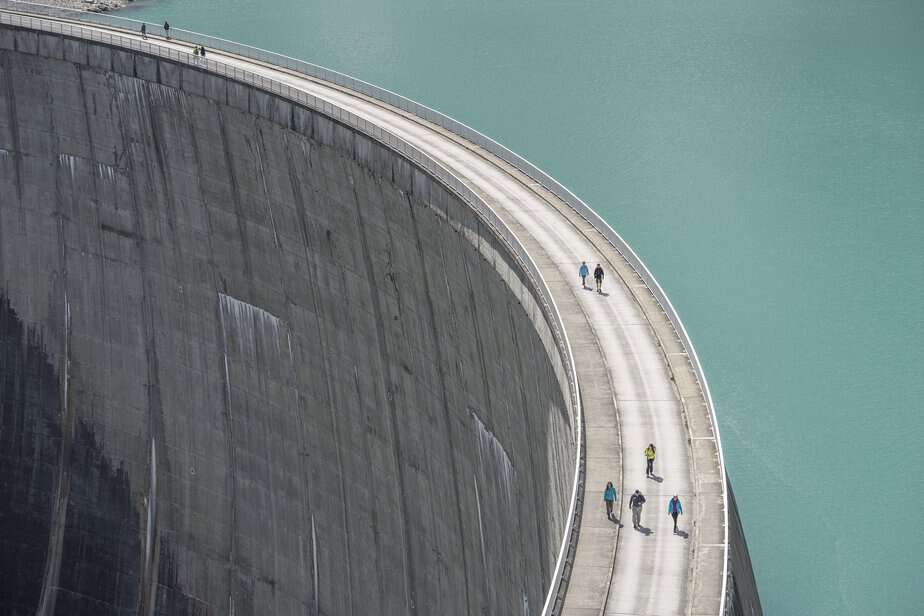
Australia’s vast and diverse landscape is dotted with numerous dams that serve essential functions in water supply, agriculture, hydroelectric power generation, and more.
Australia is a vast and diverse country, known for its stunning natural landscapes. Among its remarkable features are its dams, engineering marvels that serve various purposes, including water storage, irrigation, and hydroelectric power generation. In this blog post, we will take a closer look at the ten largest dams in Australia, highlighting their significance, capacity, and the role they play in the country’s development.
Snowy Mountains Scheme – Tumut 3 Power Station
The Snowy Mountains Scheme is one of Australia’s most iconic engineering projects, and the Tumut 3 Power Station is a key component of this massive system. Located in New South Wales, Tumut 3 is both a hydroelectric power station and a dam. It has a storage capacity of approximately 1,500 million cubic meters and plays a crucial role in supplying clean energy to the region.
Lake Argyle
Situated in Western Australia’s Kimberley region, Lake Argyle is Australia’s second-largest artificial reservoir. This immense body of water, created by the Ord River Dam, has a capacity of around 10,763 million cubic meters. Lake Argyle supports agriculture in the area and provides water for the nearby town of Kununurra.
Lake Eildon
Lake Eildon, located in Victoria, is a popular recreational destination and an important water storage facility. With a capacity of roughly 3,391 million cubic meters, it supplies water for irrigation, electricity generation, and domestic use. Its vast shoreline is a haven for boating, fishing, and camping enthusiasts.
Lake Hume
Lake Hume, situated on the border of New South Wales and Victoria, is formed by the Hume Dam on the Murray River. It has a storage capacity of approximately 3,046 million cubic meters. The dam serves multiple purposes, including water supply, irrigation, hydroelectric power generation, and flood control.
Blowering Reservoir
Blowering Reservoir, located in New South Wales, is created by the Blowering Dam on the Tumut River. It has a capacity of about 1,628 million cubic meters and is primarily used for irrigation and hydroelectricity generation. The surrounding area offers stunning scenery and recreational activities.
Dartmouth Dam
The Dartmouth Dam, also known as the Dartmouth Reservoir, is Victoria’s largest dam. Situated on the Mitta Mitta River, it has a storage capacity of around 3,056 million cubic meters. Dartmouth Dam plays a crucial role in water supply, hydroelectric power generation, and irrigation for the region.
Burdekin Dam
Located in Queensland, the Burdekin Dam is one of the largest dams in Australia in terms of storage capacity, with approximately 1,860 million cubic meters. This dam is vital for water supply, irrigation, and flood mitigation, supporting agriculture and urban development in the region.
Lake Gordon
Lake Gordon is a man-made reservoir in Tasmania, formed by the Gordon Dam on the Gordon River. It has a storage capacity of roughly 12,359 million cubic meters, making it one of the largest dams in terms of volume. The hydroelectric power generated from the dam contributes significantly to Tasmania’s energy supply.
Lake Pedder
Lake Pedder, also in Tasmania, is another impressive reservoir. While it doesn’t have the storage capacity of Lake Gordon, it remains an essential water source for the region. The lake, created by the Serpentine Dam, offers a picturesque setting for outdoor activities.
Lake Moondarra
Lake Moondarra is a smaller but significant dam located near Mount Isa in Queensland. With a capacity of around 58 million cubic meters, it plays a crucial role in providing water for the local community and supports recreational activities such as fishing and boating.
Conclusion
These top ten largest dams, from the Snowy Mountains Scheme’s Tumut 3 Power Station to Lake Moondarra in Queensland, showcase the country’s commitment to harnessing its natural resources for the benefit of its people. Whether it’s the iconic Snowy Mountains Scheme or the remote beauty of Lake Gordon in Tasmania, these dams are not only engineering marvels but also vital contributors to Australia’s growth and development. As we continue to face water management challenges and the need for sustainable energy, these dams will play an increasingly critical role in shaping Australia’s future.
More reading
8 Steps to Calculate How Much Water You Need in Storage to Achieve Water Security in a Drought
